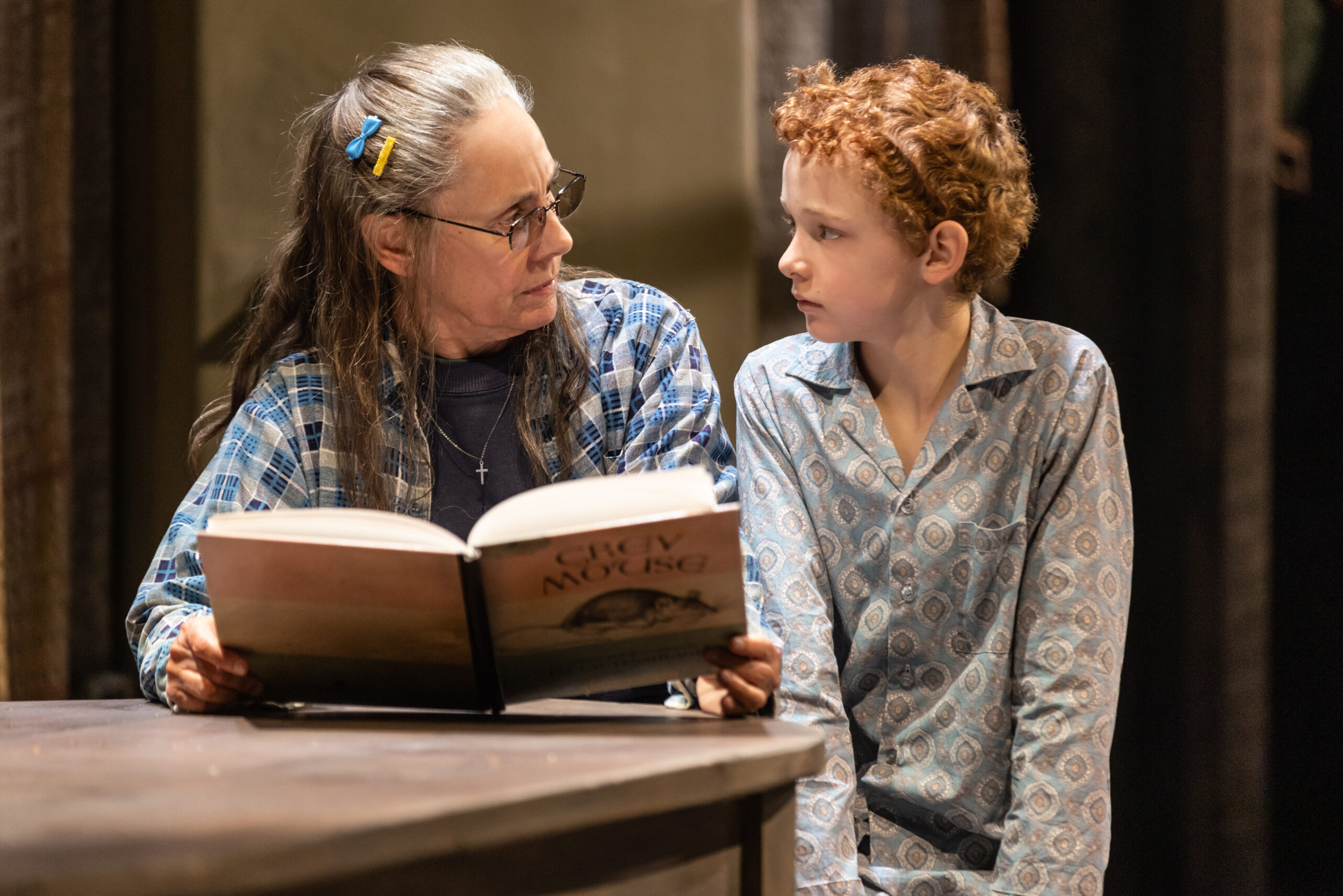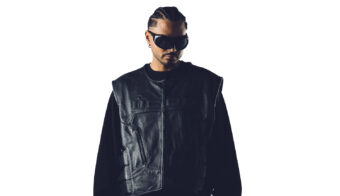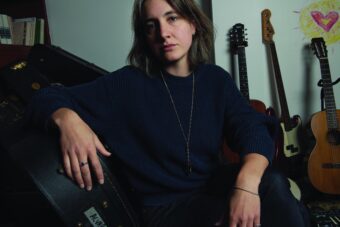It’s tough being a fan of horror and Broadway. It’s rare that the two meet on the stage, and effectively. Thankfully, we now have Levi Holloway’s Grey House.Directed by Joe Mantello, it’s the first original Broadway play in a long time that truly gets under your skin.
It concerns a married couple who crash outside a house in a winter storm. They discover that it’s occupied by a woman and her five children, mostly girls, all of whom exhibit odd behavior throughout the course of their stay there. The story serves up revelations about trauma, grief, and repression in a variety of sinister and ghostly scenarios that legitimately creep out the audience. Laurie Metcalf is the salty matriarch who, along with the other cast members, provide unsettling, oddball humor that maintains the surreal atmosphere beyond the overt scares.

Grey Houseimplants lingering questions that will sit in your mind long after the show has ended – it’s likely you want to see the show a second time to really absorb everything that’s going on. Though he’s not strictly a horror playwright, Holloway obviously has a penchant for it. He has more fear fare coming – a forthcoming adaptation in London (that’s all he can say), then another original horror play in Chicago starring Michael Shannon in the spring of 2024.
I sat down with Levi Holloway to talk about the genesis of the show, working with deaf actors like A Quiet Place’s Millicent Simmonds, his Chicago-based theater company Neverbird, and what attracts him to the dark side.
SPIN: I’ve been a horror fan my whole life. My poor parents when I was growing up…
Levi Holloway: Me too. My dad was a big horror guy. He loved it, so he introduced me to it at a really young age. My first movie was Nightmare on Elm Street when I was five at the theater.
Your dad thought it was appropriate to take you to that movie?
Yeah, it was the ‘80s, it was a different time. I was sort of his movie buddy, but I was freaked out. It did fuck me up. But the next day – I don’t know if I’d slept – he got me a subscription of Fangoria and was like, “Look, this is how it’s done.” We looked at it forensically. I’m actually really grateful for him. I don’t know if I should be, but I’m pretty grateful that that’s my first.
The Grey Housesound design, set design – everything is tying into a lot of what we see in a lot of modern horror films. There are nods to Satanic and body horror. What was the initial intention in writing this?
I have a really active nightmare life, I have night terrors. I always have. And I’m really interested in my dreams. I think that nightmares in particular are really honest, and I think we should pay close attention to them. I certainly do. So I write from that place. I write from the places that hurt.
This is heavy – I don’t mean it to be, I just bring it up for context – but my twin [sister] died suddenly in 2016, I just didn’t know what to do with that. I just started writing about it. That turned into a ghost story where I wanted to talk about a house that holds grief, but also holds the idea of a found family. And that the people we lose can go somewhere and have a youth and experience family, and also meet their trauma and heal. So it is horror, but it’s also really heartfelt. It’s about the most vulnerable thing I’ve ever written.

Laurie Metcalf’s character of Raleigh says that she thinks a ghost is your future self warning you not to become the person you’re becoming. That becomes a theme throughout the piece. Were you trying to have the ending unfold like one of your nightmares? Or have the audience it sort out by projecting their own thoughts and experiences?
That’s a great question. I do believe in the whitespace of the page between the ink, and I think the audience has a lot of work there. But I do not believe in ambiguity for ambiguity’s sake. I don’t believe in withholding anything. I enjoy the puzzle box nature of the piece. That’s fun for me. But my main intent is for an audience member very specifically to find themselves in the piece. Horror is a funny thing, especially on stage because you can’t manipulate the audience. You have to be honest. And if I hide anything, it hides in plain sight.
I never set out to write something terribly palatable, certainly not commercially palatable. I just wanted to tell something really personal. And I do get surprised that when people come up with these amazing theories and ask me for the answers. I’m so tempted to just give them all, but I did say everything I wanted to say. And sometimes when you find out what the real answer is, it could be a diminishing return. It could be less impactful than your imagination. That said, I’m very specific, and I think that this play takes this left turn halfway through it and becomes a really human story. I think that if you look at the story backwards from the end to the beginning, I think it comes into a really high resolution. Those are the kinds of things I love. It’s a love letter to all the pieces of horror I love. I grew up reading Stephen King, and now I’m just a huge fan of his son, Joe Hill.
What was it like working with Laurie Metcalf? And how much input did she give you?
Laurie’s awesome. I had breakfast with her in L.A. before we came to New York to start rehearsal, and she had a question about a stage direction and offered a different take on that. It opened up the play for me in this way. She and Joe are like mischief-makers. They always have each other’s ear, and they’re coming up with bits. I said early on to everybody, because I was there every day, that the play was alive and let’s find what’s best, what’s truest. She was such a champion of that and such a steward of the story, and she’s so fucking funny. But it’s only because she’s so honest that she’s so funny. She always holds the audience in a very specific place in her hand, and she loves them so much. She was word perfect, then whenever she would say something just off, she’d come up to me – “I tried this thing”. I rewrote entire speeches just for her just because I couldn’t wait to hear what she’d do with them.
Deaf actress Millicent Simmonds has been a standout in the Quiet Placemovies. How did she come into the picture here?
I’ve always been a huge fan of her since even before the first Quiet Place. I think it was Wonderstruck. There aren’t a lot of roles for deaf artists. But because I have such an extensive background in deaf integration and education, when Millie became interested I was just floored. Then Joe met with her over Zoom, and this is Joe’s first time working with a deaf artist. I think it woke something up in him. We just love the hell out of Millie. And one could think that the room takes care of her, that she has a set of needs that requires something like that, but it’s the opposite. She absolutely takes care of the room, and the most amazing thing of all is when you watch hearing people who’ve never signed before start to learn, and the way she and our director of ASL are teaching our hearing actors sign language, then suddenly everybody’s proficient enough to carry on conversations.
Everything I’ve ever written is deaf and hearing integrated, and that goes back 15 years. I’ve done a lot of shows that nobody wrote anything about because it was an elementary school or at a residency as a teaching artist. That’s how I cut my teeth – working with deaf classrooms and figuring out how to move in that space and tell stories in that space. I never write about deafness. I only write of it, not for it. Because I would never dare take that cultural space, and inclusivity, by my estimation, doesn’t work if you point to it. I try to create roles for deaf artists because they should have more of them, but I never write about the deaf experience. And in this play, Bernie is just a member of the family who happens to be deaf.

You’ve done at least now three horror plays with deaf actors in it. Is that a coincidence?
No, no, it’s very much intentional. I’ve doneHaven Place, which was a play in 2016 about a group of young kids traveling across the country in a Winnebago being chased by Elder Gods, but really it was about a little found family moving through darkness. The deaf and hearing integration bound them together, and it knit them in a way that that made it impossible for them to be torn apart. Of course, there were moments when that would help them survive certain scenarios.
Then I did Pinocchioat Chicago Children’s Theatre, and our Pinocchio was a young deaf artist and her Cricket was hearing. There was a lot of simultaneous communication, a lot of SimCom in that, but also for accessability the Cricket would voice what Pinocchio would sign. And that had horrific elements in it because it was based on part of the book where Pinocchio is walking down the street and he looks up and there’s a girl standing in a window at night. He says, “Who are you?” And she says, “I’m a dead girl.” And he says, “What are you doing?” She says, “I’m waiting for my coffin.” Then she shuts the window. It was such a gem. It was such a golden moment. I wrote the whole play based on that. So it was a horror play and was about grief also, about Geppetto trying to find out how to grieve.
Can we talk about the music for Grey House?
Or Matias did all the arrangements. The songs already exist. One of my favorite bands has all the music, except for Bobbie Gentry who has that song at the breakfast. [Folk trio] Mountain Man has all the acapella songs except for the last song that the Ancient sings. That’s Sylvan Esso who is Amelia Meath, and she is also one of the three singers in Mountain Man. As I wrote a lot of the show I would just listen to their music. I work a lot like that. I listen to music and that moves me. If I wasn’t listening to that I was listening to Tool.
What are your favorite horror movies?
[John Carpenter’s] The Thing for me is the gold standard. It does it all. It’s very nostalgic for me, and I never get tired of watching it – the mystery of it, and the human questions in it and also just the fucking body horror and the practical effects. I just love it. I love Alien. I love Rosemary’s Baby. I like a lot of old horror. More recent horror – you’ll see the inspiration’s in the play – Let the Right One In, the Swedish original. That one is just like the song of my heart. I love that movie so much. I like Midsommar in particular. The lead character has to witness violence, like trauma in front of her, to process her own. I don’t think anything he does is careless. Even though [Ari Aster] can use horrific violence, it’s never without a reason.
Has creating Grey House helped you in dealing with the loss of your twin?
Definitely. I’m one of the lucky few that I get to go talk to her. Every time I see the show, I’m talking to her. Every time I’m in rehearsal, I’m talking to her, and I wish that for anybody who’s lost someone so architectural in their lives. It’s a way of always remembering and always being in conversation. Just because someone’s dead doesn’t mean we’re not talking to them anymore. In fact, I think those conversations can become even more vibrant. I believe in that.
My dad passed in 2019. He struggled with alcohol. He was a hard-ass and a biker and had a hard life, but he also was my Little League coach. [laughs] He was always two people, and I loved him for that. He’s in the play quite a bit, and that’s the gift. I get to exorcise the things that are so formative to me, that carved me out and carved me up. I get to write about that.




